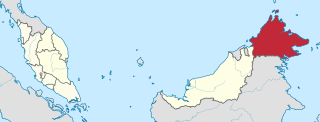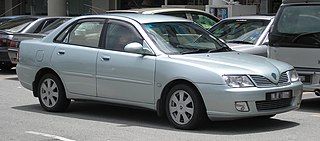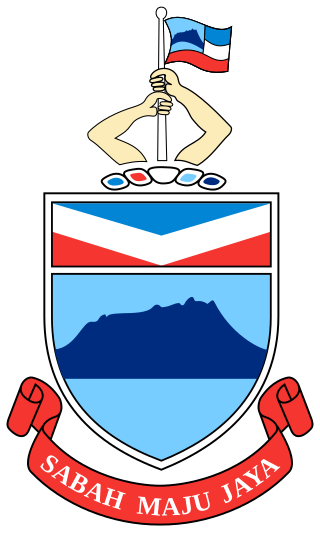
Sabah is a state of Malaysia located on the northern portion of Borneo, in the region of East Malaysia. Sabah has land borders with the Malaysian state of Sarawak to the southwest and Indonesia's North Kalimantan province to the south. The Federal Territory of Labuan is an island just off Sabah's west coast. Sabah shares maritime borders with Vietnam to the west and the Philippines to the north and east. Kota Kinabalu is the state capital and the economic centre of the state, and the seat of the Sabah State government. Other major towns in Sabah include Sandakan and Tawau. The 2020 census recorded a population of 3,418,785 in the state. It has an equatorial climate with tropical rainforests, abundant with animal and plant species. The state has long mountain ranges on the west side which forms part of the Crocker Range National Park. Kinabatangan River, the second longest river in Malaysia runs through Sabah. The highest point of Sabah, Mount Kinabalu is also the highest point of Malaysia.

Kota Kinabalu, colloquially referred to as KK, is the state capital of Sabah, Malaysia. It is also the capital of the Kota Kinabalu District as well as the West Coast Division of Sabah. The city is located on the northwest coast of Borneo facing the South China Sea. The Tunku Abdul Rahman National Park lies to its west and Mount Kinabalu, which gave the city its name, is located to its east. Kota Kinabalu has a population of 452,058 according to the 2010 census; when the adjacent Penampang and Tuaran districts are included, the metro area has a combined population of 628,725. The 2020 Census revealed an increase in the municipal population to 500,421, while the wider area including the Penampang and Putatan districts had a population of 731,406.
In Malaysia, the Yang di-Pertua Negeri is a constitutional title given to the head of state in states without a ruler, namely: Penang, Malacca, Sabah and Sarawak. This is in contrast to a Ruler which is a constitutional title given to states with hereditary monarchies, namely: the Sultans of Johor, Kedah, Kelantan, Pahang, Perak, Selangor and Terengganu; the Raja of Perlis: and the Yang di-Pertuan Besar of Negeri Sembilan.

This article lists important figures and events in Malayan and Malaysian public affairs during the year 1963, together with births and deaths of significant Malaysians. The Federation of Malaya merged with Singapore, North Borneo, and Sarawak to form the Federation of Malaysia on 16 September.
This article lists important figures and events in Malaysian public affairs during the year 1972, together with births and deaths of notable Malaysians.
This article lists important figures and events in Malaysian public affairs during the year 1976, together with births and deaths of notable Malaysians.

This article lists important figures and events in Malaysian public affairs during the year 2002, together with births and deaths of notable Malaysians.

This article lists important figures and events in Malaysian public affairs during the year 2000, together with births and deaths of notable Malaysians.

The history of Sabah can be traced back to about 23–30,000 years ago when evidence suggests the earliest human settlement in the region existed. The history is interwoven with the history of Brunei and the history of Malaysia, which Sabah was previously part of and is currently part of respectively. The earliest recorded history of Sabah being part of any organised civilisation began in the early 15th century during the thriving era of the Sultanate of Brunei. Prior to this, early inhabitants of the land lived in predominantly tribal societies, although such tribal societies had continued to exist until the 1900s. The eastern part of Sabah was ceded to the Sultan of Sulu by the Sultan of Brunei in 1658 for the former helping a victory over Brunei enemies, but many sources stated it had not been ceded at all. By the late 19th century, both territories previously owned by Sultan of Brunei and Sultan of Sulu was granted to British syndicate and later emerged as British North Borneo under the management of the North Borneo Chartered Company. Sabah became a protectorate of the United Kingdom in 1888 and subsequently became a Crown colony from 1946 until 1963, during which time it was known as Crown Colony of North Borneo. On 16 September 1963, Sabah merged with Malaya, Sarawak and Singapore to form Malaysia.
The chief judge of Sabah and Sarawak, formerly the chief justice of Borneo, is the office and title of the head of the High Court of Sabah and Sarawak. The title has been in use since 24 June 1994, when the High Court of Sabah and Sarawak was renamed from the High Court of Borneo.

The Governor of Sabah is the ceremonial head of state of the Malaysian state of Sabah. The Yang di-Pertua Negeri is styled Tuan Yang Terutama. The current officeholder is Juhar Mahiruddin, who was sworn in on 1 January 2011.

Kota Kinabalu is a federal constituency in West Coast Division, Sabah, Malaysia, that has been represented in the Dewan Rakyat from 1971 to 1974, from 2004 to present.

Tuaran is a federal constituency in West Coast Division, Sabah, Malaysia, that has been represented in the Dewan Rakyat since 1971.

Penampang is a federal constituency in West Coast Division, Sabah, Malaysia, that has been represented in the Dewan Rakyat since 1971.

The Penampang District is an administrative district in the Malaysian state of Sabah, part of the West Coast Division which includes the districts of Kota Belud, Kota Kinabalu, Papar, Penampang, Putatan, Ranau and Tuaran. The capital of the district is in Penampang Town.
Tan Sri Datuk Seri Panglima David Wong Dak Wah is a Malaysian lawyer and judge who served as the fifth Chief Judge of Sabah and Sarawak.

Sabah Islamic Civilisation Museum is a 2-storey museum building located at Menteri Street in Kota Kinabalu District of Sabah, Malaysia.
Tun Sakaran Museum is a museum in Semporna of Sabah, Malaysia. It is named after the 8th Yang di-Pertua Negeri of Sabah, Sakaran Dandai.
Muzium Mat Sator is a museum in Old Kapayan Village in Tambunan District of Sabah, Malaysia. It is named after the follower and chief lieutenant of Mat Salleh, Mat Sator. The museum is located around 122-metre from the area of the Fort of Mat Salleh.

The Royal Family Order of the Crown of Brunei is an order of Brunei. It was established on 15 August 1982 by Sultan Hassanal Bolkiah. The order carries the post-nominal letters "DKMB".




















